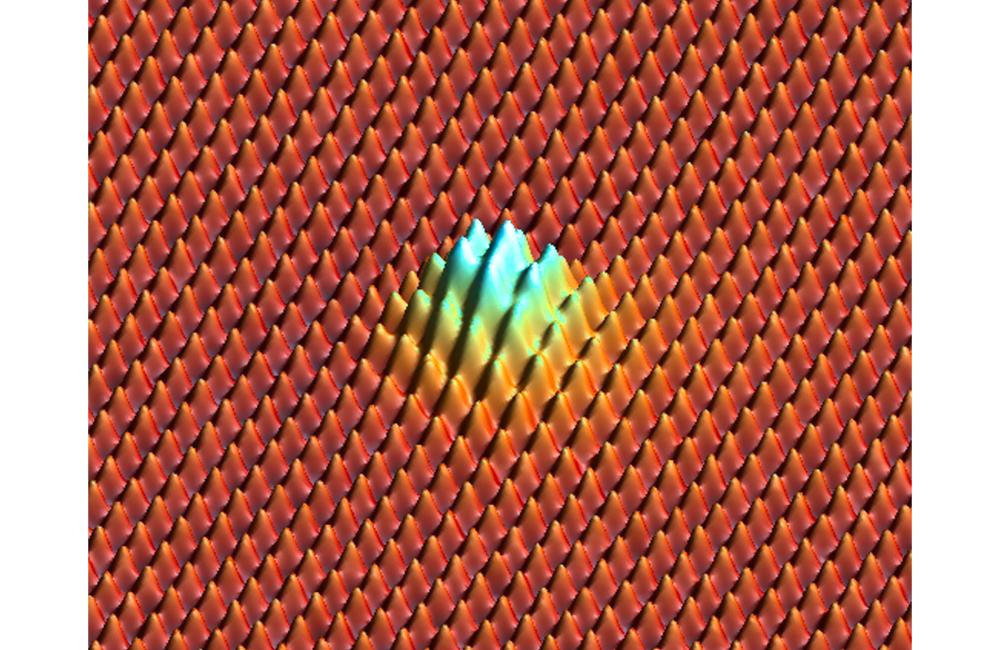January 4, 2017 – Researchers at Oak Ridge National Laboratory found a simpler way to measure adhesion between graphene sheets, compared to a sophisticated method used in a 2015 study: They measured how much graphene deflects when neon atoms poke it from below to create “bubbles.” Each bubble’s curvature encodes properties such as sheet flexibility and adhesion. “We discovered a new method to measure adhesion of layered materials at very small length scales,” said Petro Maksymovych. “It’s a simple way to probe a large number of two-dimensional materials and ask how their mechanical properties vary with modifications. It also opens an avenue for atomic-scale control over 2D materials without defects, which may prove useful to achieve their full potential in future technologies.” Stacking atomically thin materials opens a pathway toward new energy and electronic applications.
Neon atoms between graphene sheets poke the top sheet from below and stretch the crystalline lattice, forming a bubble at a pressure larger than that of the ocean at its greatest depth. The ORNL method can introduce large local strains into 2D lattices in cases where conventional methods fail.



